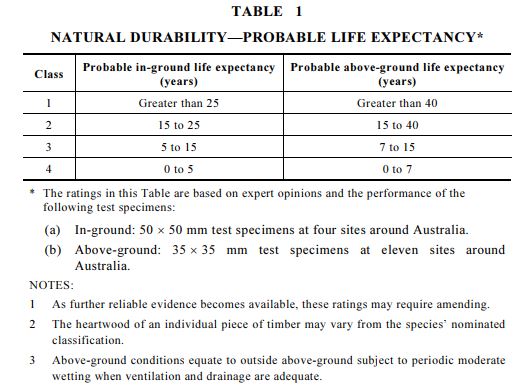Phone: 03 577 2395
C/- Marlborough Research Centre Trust, PO Box 875, Blenheim 7201
Excellent or very good natural ground-durability is a key feature of the NZDFI’s species selected for genetic improvement and trials. All selected species are in Class 1 or 2 based on the Australian Durability Standard.
Natural Durability Classes
Natural durability is defined as “the inherent resistance of a specific timber to decay and to insect attack”. Natural Durability Classes provide the basis for rating the timber’s performance and longevity in contact with the ground when exposed to average environmental conditions. The classification system is based on the average life expectancy (in years) for any timber species, as shown below.
 (Standards Australia, 2003. Revised 2005. AS 5604 – Timber-Natural durability ratings.)
(Standards Australia, 2003. Revised 2005. AS 5604 – Timber-Natural durability ratings.)
Wood properties vary within and between species. Durability also depends on the ground conditions in which the timber is used. The classifications are therefore only a guide. Actual timber life will depend on the local ground conditions and other factors: